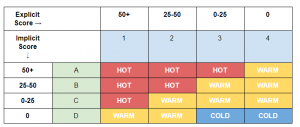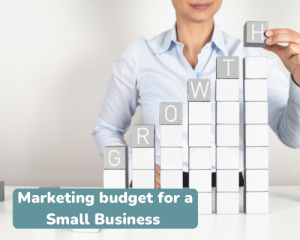
Meeting your business objectives isn’t easy –– no matter how many Inc., Entrepreneur, Fast Company or Medium posts go viral within the executive community explaining why this or that strategy produced hockey stick growth.
The truth of the matter is this: what makes your business successful is your dedication to customer experience, your market strategies, your operational efficiencies and the team of people you build. Your unique combination of these aspects is unlike that of any other business out there –– and is why no FUD headline like “Why Your Business Will Fail” or “8 Innovative Ways to Skyrocket Growth” will ever fully apply to your brand.
Of the many decisions you make to drive success for your online business, one of the biggest is which pipes you install. That is, which ecommerce platform you choose to power your business and ready it for scalable, long-term growth. For most growing mid-market businesses, this technology is typically provided by BigCommerce, Shopify, Magento or Demandware.
The selection of one of these four platforms is where you can truly unlock performance. Understandably, this decision has wide-ranging implications –– to your customers in engaging with your brand and reducing friction of getting the product they need, to your employees that have to implement campaign strategies, and to your bottom line in terms of sales growth as well as cost of maintenance and installation.
Let’s Talk About Ecommerce Platform Cost
I recently had the opportunity to speak with a member of Macy’s tech development team. He’s considering launching his own online store and he’s had an up close and personal view of how Macy’s operates.
He’s taken keen mental notes. Here is what he tells me:
“Figuring out where to source the products, how to package them cost effectively and which platform to host your site on, how to make it look great and function correctly –– all of that is doable. It’s easy, for lack of a better term. What isn’t is the marketing. That’s a tough nut to crack. That’s where I want to spend my money. That’s the way the industry is going –– spending money to get eyeballs, and traffic and conversion, to win hearts and minds and wallets. If I want to be successful, I need to spend there to test there so I can double down where it works.”
He’s right. Spending all of your money on your technology is frustrating. Figuring out which channels to market in for your audience, how to message that marketing and ultimately how to win the loyalty of your customers is where you should be spending your money. How you do that is up to you. Nothing –– the technology, functionality, on-going maintenance costs –– should hinder that.
To that point, Magento and Demandware are excellent ecommerce solutions –– for brands that can afford to pay $ 10,000 to hundreds of thousands in launch costs.
They work well when you have a team dedicated to the store’s development and lifetime maintenance. Even then, paying those costs doesn’t necessarily translate to improved business performance. So why do it?
In the case of Magento specifically, you will also be paying thousands annually beyond installation in maintenance and patch fix costs.
For these reasons, there is a significant shift underway from on-premise solutions (such as Magento) to SaaS technologies, as supported by recent research from Forrester.

Let’s Talk About “Out-of-the-Box” Ecommerce Platform Claims
IRCE 2016 was a particularly insightful conference for me. There, I also met multiple high-volume and revenue retailers trying to piece together the differences between BigCommerce and Shopify Plus.
Shopify Plus has gotten a lot of buzz as of late (going public tends to do that). That buzz, however, has been built on being a great solution for starter and hobbyist businesses. For high-growth and established brands, Shopify Plus is lacking in core functionality those businesses need.
And therein lies the problem. A big key to businesses success is effective operational efficiencies. Perception means little in comparison to performance –– especially when it comes to your ecommerce stack.
Performance v. Perception: BigCommerce v. Shopify Plus
Shopify’s got the cool. They have the swag. They’ve successfully helped thousands of small, independent business owners launch stores quickly, easily and beautifully. They’ve brought a simplified version of ecommerce to the masses. That deserves applause.
But at BigCommerce, we took a different approach. Yes, we wanted to help customers get up and running fast –– but we wanted to do it in such a way that would enable long-term growth. So we talked to customers with that mindset. We aren’t interested in being a hobbyist platform.
Here’s what we wanted to know:
- What features make the most difference in helping you grow and sell effectively?
- What other solutions outside of an ecommerce platform are you using that are critical to your success?
The answers to these questions paved the way forward for BigCommerce. We focused our time on building +1s for mid-market merchants, addressing their concerns and needs specifically.
Here is how everything broke down.
Mid-Market +1s –– Where BigCommerce is the Only Platform to Offer What You (and Your Partners) Need
First of all, we learned that there are +1s out there. These are the things that those evaluating ecommerce platforms care deeply about, but not everyone does well. So by building these out, we’ve created a differentiated platform that more fully meets mid-market needs.
These include:
- Beautiful, customizable storefronts, which include features that make expressing your brand easier. For instance:
- Dozens of new, modern templates to provide a great starting point for your new design, and tools to customize those designs
- A local development environment to rapidly test designs without affecting your live store
- Browser sync to allow you to view proposed design changes simultaneously across mobile, tablet and desktop
- Dozens of new, modern templates to provide a great starting point for your new design, and tools to customize those designs
- Natively available tools to maximize conversion
- Faceted search to help consumers quickly navigate large and complex product catalogs
- Advanced promotions and discounting tools
- Single page checkout to speed customers through the purchase process
- Faceted search to help consumers quickly navigate large and complex product catalogs
- Customer groups to manage pricing easier across segments (e.g. consumer pricing versus wholesale pricing)
- Platform extensibility / API performance
- Pre-built, 1-click integrations to enterprise ERP, PIM and CRM systems
- Robust, open API architecture with unlimited API calls that aren’t throttled
- Extensive, hand-curated app ecosystem, focused on quality over quantity
- Pre-built, 1-click integrations to enterprise ERP, PIM and CRM systems
- Premium support and services
- Onboarding services to ease the transition from your old platform to BigCommerce
- Strategic account management for our largest customers to get guidance on how to take sales to the next level
- Express routing and priority support to get mid-market customers help fast
- Onboarding services to ease the transition from your old platform to BigCommerce
Armed with this intel, the BigCommerce team got to work including all of these items within our out-of-the-box functionality.
Another mid-market +1 –– Empowering mid-market merchants to “come as they are”
As powerful as the platform is, we also heard from customers that flexibility is key. We understand that while it’s important to have native functionality, merchants also should be able to “come as they are,” to plug in their ERP of choice or other enterprise-grade tools that make their business run.
So we’ve spent a lot of time, and continue to spend time, on improving our API. In fact, with 100’s of API calls per second on BigCommerce, you could sync your 25,000 product inventory from your ERP in 60 seconds; Shopify Plus would take 2hrs with its 10 API calls/second limit.
This is the biggest difference between BigCommerce and Shopify Plus.
- We’ve spent the last two years dedicating ourselves to the exact needs of mid-market merchants.
- We’ve operationalized our platform to work best for those selling and quickly scaling beyond $ 1 million annually.
- BigCommerce works with billion dollar brands that are transacting up to $ 100 million in online sales.
Our customers compete against a constantly changing commerce industry. We consider ourselves their tech people. We don’t do swag well. We do smarts well. Our customers get to focus on the marketing and whatever else they need to do to grow sales.
Don’t Just Take Our Word
There are tons of ecommerce platform comparisons out there. We’ve chosen this one for a deep dive as the the methodology is sound and comprehensive.
Here is a brief summary of how SelfStartr found the data to do the research:
- Used BuiltWith to find the 20 most popular ecommerce platforms
- Pulled a giant spreadsheet for all the websites on each platform (ex> our Magento list had 23,887 sites)
- Used RAND function in Google Sheets to assign a random number to each row
- Collected data on the first 100 websites on each platform (100 sites x 20 platforms = 2000 sites)
- Used a team of 4 researchers to collect data for each website
- Load time from Pingdom
- Mobile PageSpeed, Mobile UX and Mobile Friendliness From Google
- Ranking Data From Ahrefs
- URL test from SEO Site Checkup
- Load time from Pingdom
Here is the research criteria they measured against:
- Price
- Performance, including: site speed for desktop and mobile, mobile UX, platform SEO,
- Features, including: SEO tools (sitemaps, customizable metadata and URLS, bulk editing), fuzzy and exact product search, ability to send abandoned cart emails, blog, mobile store, coupon and discount capabilities, integrated ratings and reviews, multiple product photos with zooming capability, ability to handle subscriptions/recurring product orders, drop shipping integration, ability to sell customizable products, fulfillment by Amazon integration, real-time shipping and tracking, reward points program compatibility, Google trusted stores
- Scalability, including: number of payment gateways and options, Amazon, eBay, Etsy integrations, Facebook, Pinterest syncing, Google Product data feed, Open API, design customization
- Ease of use, including: phone support, 24/7 support, chat support, certified additional dev/marketing support, free templates
Here are the results of the study (in depth here and via screenshot below).

Go ahead and take a look at the article. Let us know what you think. We’re happy to take any questions. We’re also stoked that no matter which platform you chose, you’re choosing to upgrade your business and invest in the future of commerce.
Welcome. We’re all on this ride together!
Digital & Social Articles on Business 2 Community(43)






